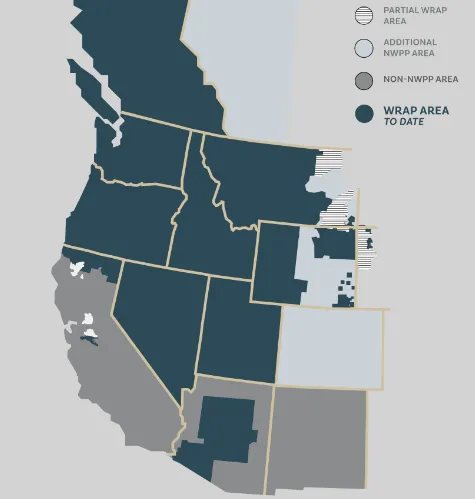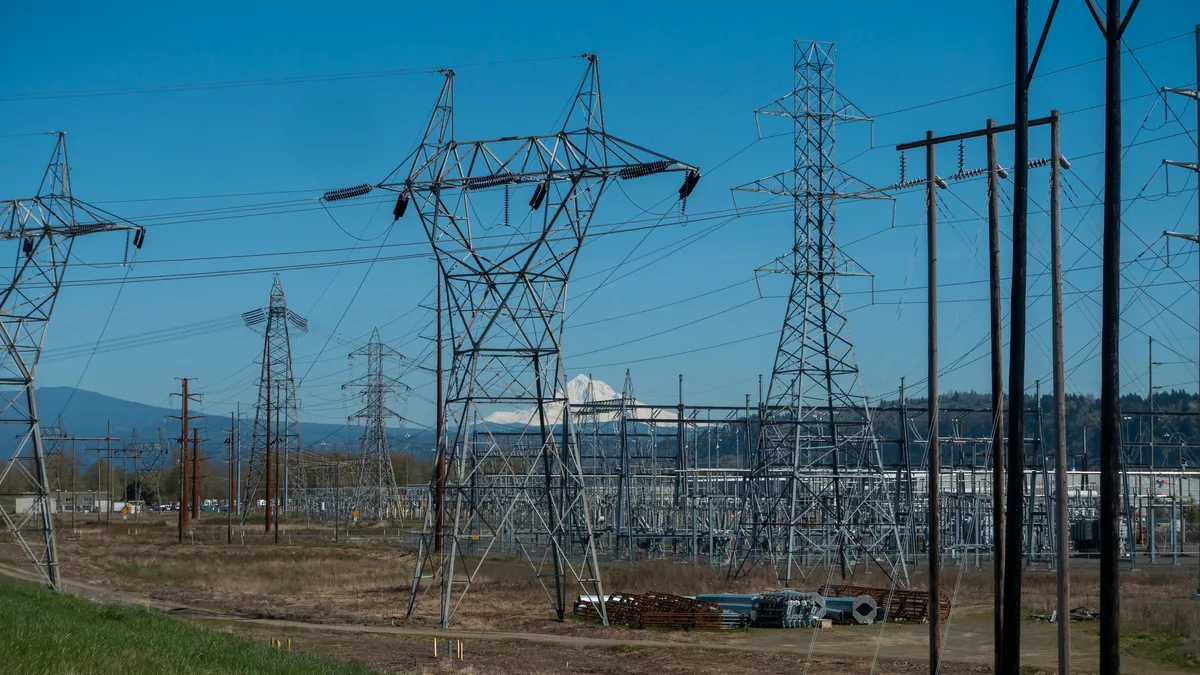Dive Brief:
- The Western Power Pool on Wednesday asked federal regulators to approve a regional resource adequacy program with initial support from 26 utilities and other entities, including Arizona Public Service, Basin Electric Power Cooperative and PacifiCorp.
- Participants in the Western Resource Adequacy Program will be required to show they have the power supplies to meet their peak load plus a share of the program’s reserve margin, according to the WPP's application at the Federal Energy Regulatory Commission. The voluntary program also includes a real-time component to be used during critical conditions.
- “The WRAP is a planning and compliance framework that seeks to take advantage of and maximize regional diversity in resources and load to enhance reliability for all customers across the WRAP footprint,” the WPP said in the filing.
Dive Insight:
The proposed WRAP, which the Southwest Power Pool would operate, marks another step towards increased integration in the West, a balkanized region of power providers without a formal grid operator outside of California.
The program’s binding obligations would start in 2025, but participants could delay being bound by its requirements for up to three years, according to the proposal.
The proposal is the first regional resource adequacy construct to be developed outside of a FERC-approved regional transmission organization or an independent system operator, the WPP said.
The West is moving away from thermal power plants and toward intermittent wind and solar, while more frequent extreme weather and drought are stressing the grid, according to the WPP.
The WRAP is designed to take advantage of regional diversity to help address capacity needs. It includes 26 entities, such as the Bonneville Power Administration, which have a 72,000 MW summertime peak load across 10 states and one Canadian province, according to the filing.
“We can better ensure reliability by working together, and we avoid the risks and inefficiency of continuing to do it individually,” Rebecca Sexton, WPP director of reliability programs, said in a statement Wednesday.

In addition to spreading the reserve margin — a level of excess capacity above the expected peak load — across WRAP participants, the proposed program would provide a real-time operations element through which participants with excess capacity, based on near-term conditions, would be asked to hold back capacity during critical periods to support participants without enough power supplies to serve their load, the WPP said.
WRAP participants that don’t meet the program’s binding aspects would be hit with penalties.
The WPP started a nonbinding phase of the WRAP for the upcoming winter season, with a goal of moving to a binding phase in the summer of 2025 for those not opting for the more gradual transmission.
Under the transition plan, the WRAP will not be fully binding on all participants until 2028, the WPP said.
Some capacity sharing will be available to nonbound participants during the transition phase to help them satisfy their load serving needs, further improving regional reliability, according to the WPP.
“During the non-binding phase of the WRAP, the region will receive the first ever regional resource adequacy metrics, enabling Participants and regulators to begin making more informed decisions about the regions needs and adequacy future,” the WPP said.
If FERC approves the WRAP, the WPP will transition to a fully independent board of directors, according to the power pool. The planned governance system would have a “robust, diverse, and inclusive” stakeholder process with a strong role for state authorities to be involved in WRAP design and tariff changes, the WPP said.
The WPP asked FERC to approve the proposal by Dec. 12 so it could take effect on Jan. 1.
The WPP expects to confirm commitments from potential participants for the program’s next phase by mid-December.
The current participants are: Arizona Public Service; Avangrid; Avista; Basin Electric; Black Hills Energy; BPA; Calpine; Chelan County Public Utility District; Clatskanie PUD; Douglas County PUD; Eugene Water & Electric Board; Grant PUD; Idaho Power; Northwestern Energy; NV Energy; PacifiCorp; Portland General Electric; Powerex; Puget Sound Energy; Salt River Project; Seattle City Light; Shell Energy; Snohomish County PUD; Tacoma Power; The Energy Authority; and, Turlock Irrigation District.















